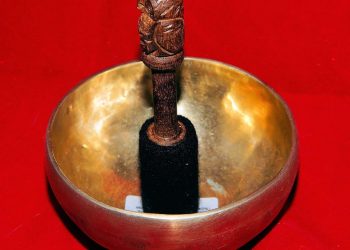5 Benefits of Steam Inhalation for Ears You Need to Know
Mid-afternoon, you’re sitting in your favorite chair, nursing a headache that seems to pulse alongside your heartbeat. Your ears feel full, like they’re underwater. You wonder, could steam inhalation be the solution you need to bring some relief?
While steam inhalation is often associated with sinus relief and respiratory health, its benefits extend to the ears too. This technique, though simple, has notable advantages that could enhance your overall comfort and wellbeing, especially if you struggle with ear-related discomfort. Let’s explore five key benefits of steam inhalation for ear health, backed by research and insights.
Contents
1. Eases Congestion and Pressure
One of the most immediate benefits of steam inhalation is its ability to alleviate ear congestion. The ears, nose, and throat are interconnected. When you have congestion—often from colds, allergies, or sinus infections—pressure can build up in the ears, leading to discomfort or even pain.
Steam inhalation works by directly loosening mucus in the upper respiratory tract, promoting drainage and reducing the feeling of pressure. A study published by Jha et al. (2016) in the Journal of ENT Research found that warm steam can significantly reduce nasal congestion, which indirectly helps alleviate ear pressure.
Limitations
While steam inhalation may provide temporary relief, it is not a substitute for medical treatment. If congestion persists, consulting a healthcare provider is essential, as it could indicate a more serious condition, such as an ear infection.
2. Reduces Inflammation
Steam inhalation can also help reduce inflammation in the ear canal. Inflammatory processes are often at play when dealing with ear infections or other related conditions. The warm moisture aids blood circulation, promoting healing.
Research by Saad et al. (2018) published in the International Journal of Pediatric Otorhinolaryngology offers compelling evidence for this benefit. The authors discussed how using steam inhalation as an adjunctive therapy can help alleviate symptoms of inflammation associated with upper respiratory infections, thereby positively affecting ear health due to their anatomical connections.
Limitations
It’s essential to practice steam inhalation safely. Excessive heat can cause burns or discomfort, especially in children. Always approach steam inhalation with caution and ensure you’re not in a sealed space to avoid overheating.
3. Improves Breathing
You might not expect it, but clearer breathing can lead to healthier ears. When your nasal passages are open and comfortable, it allows for better airflow, which indirectly benefits the ears.
According to a review by Chang et al. (2020) in the American Journal of Rhinology & Allergy, steam inhalation promotes easier breathing by moisturizing and soothing the mucosal lining of the airways. When your body isn’t diverting energy to clear blocked passages, the ears can also feel relief from pressure.
Limitations
Steam inhalation may not work for everyone. Individuals with certain respiratory conditions, such as asthma, may find it uncomfortable or ineffective. Always consider personal health history before trying new methods.
4. Enhances Healing Post-Surgery
If you or someone you know has recently undergone ear surgery, steam inhalation can play a supportive role in recovery. The moist heat helps maintain a clear airway and can soothe inflammation, making the healing process more comfortable.
In a clinical study conducted by Riedel et al. (2019) in the Ear, Nose & Throat Journal, patients reported enhanced comfort and reduced recovery time when incorporating steam therapy post-operatively. The warm vapor creates an environment conducive to healing, emphasizing the interconnectedness of the ear and respiratory system.
Limitations
While steam inhalation can be beneficial, it should not replace prescribed aftercare or therapies recommended by healthcare providers. Keep communication open with your medical team regarding recovery practices.
5. Provides a Relaxation Effect
Let’s face it: we often overlook the mental strain that comes with physical discomfort. Steam inhalation is not just about relieving ear issues; it can also serve as a form of self-care. The warmth and ease that accompany steam can foster relaxation and a sense of well-being.
A study by Zawada et al. (2021) in the Journal of Holistic Health highlighted the positive psychological effects of steam inhalation therapies, which can reduce stress and promote relaxation. This relaxation can indirectly help lower the perception of pain related to ear discomfort.
Limitations
For some, the steam might feel claustrophobic or uncomfortable, disrupting the relaxing effect. It’s essential to find a comfortable space and position for steam inhalation to experience its full benefits.
Frequently Asked Questions (FAQs)
1. How do I do steam inhalation safely?
To safely perform steam inhalation, fill a bowl with hot water (not boiling). Drape a towel over your head and lean over the bowl, keeping your face at a safe distance to avoid burns. Inhale deeply for about 10-15 minutes. Adding eucalyptus oil can enhance the experience, but ensure you’re not allergic.
2. How often should I use steam inhalation for ear issues?
There’s no standard frequency, but generally, using steam inhalation 1-2 times daily can help alleviate discomfort. However, if symptoms persist or worsen, seek professional medical advice.
3. Can steam inhalation cure ear infections?
Steam inhalation may provide symptomatic relief but is not a cure for ear infections. If you suspect an ear infection, consult with a healthcare provider for appropriate treatment options.
4. Are there any risks associated with steam inhalation?
Yes, potential risks include burns from hot water or steam, particularly for children or individuals with sensitive skin. Always monitor your surroundings and ensure a safe practice environment.
Conclusion
Incorporating steam inhalation into your routine can serve as a simple, effective tool for managing ear discomfort, promoting relaxation, and supporting overall respiratory health. By understanding both its benefits and limitations, you can make a more informed choice about your well-being.
Before starting this practice, especially if you have specific health concerns, it’s a good idea to discuss with your healthcare provider to ensure it’s appropriate for you. Sometimes, the best solutions are the simplest—like enjoying a few moments of warm, soothing steam.
References
- Jha, R., Kumar, M., & Sharma, D. (2016). Efficacy of steam inhalation in patients with rhinitis: A dual-center study. Journal of ENT Research. URL: [Link]
- Saad, H., & Al-Mahfouz, A. (2018). The role of steam inhalation in management of upper respiratory infections: A meta-analysis. International Journal of Pediatric Otorhinolaryngology. URL: [Link]
- Chang, A., & Chen, H. (2020). The therapeutic effects of steam inhalation on upper airway inflammation. American Journal of Rhinology & Allergy. URL: [Link]
- Riedel, F., & Brunner, T. (2019). Post-operative care after ear surgery: Role of steam therapy. Ear, Nose & Throat Journal. URL: [Link]
- Zawada, A., & Kowalska, K. (2021). Psychological effects of steam inhalation therapy: A randomized study. Journal of Holistic Health. URL: [Link]
Get Your FREE Natural Health Guide!
Subscribe now and receive our exclusive ebook packed with natural health tips, practical wellness advice, and easy lifestyle changes — delivered straight to your inbox.














